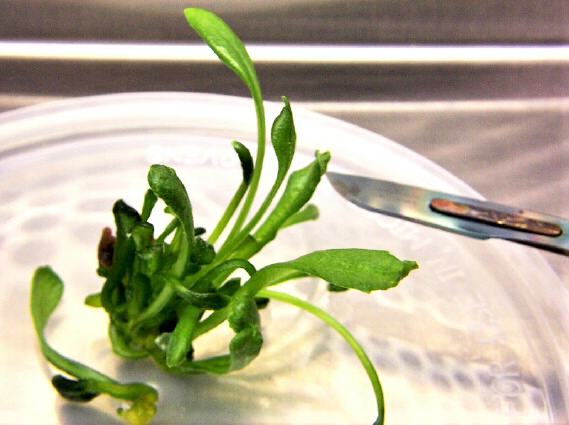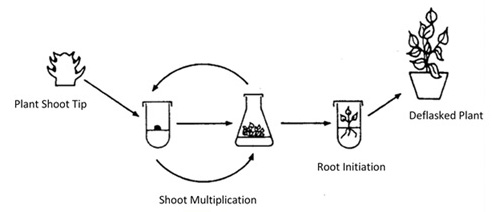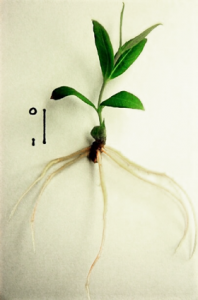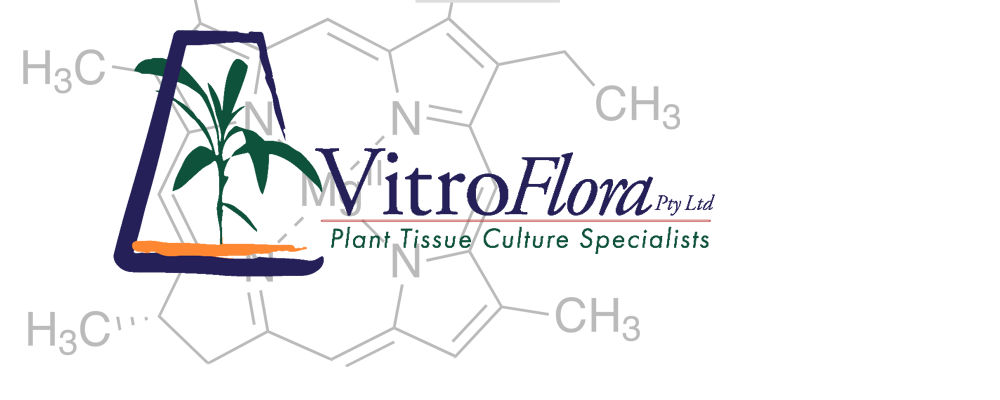VitroFlora Pty is one of the leading Tissue Culture (TC) laboratories in Australia. It produces plants for many agriculture sectors, including ornamental horticulture, cut flowers and foliage, nursery and landscaping, timber and forestry, revegetation and ecosystem restoration, and edible crops such as fruit, nuts, ginger and sugar cane.
VitroFlora stands apart because of this wide range of expertise. Many laboratories specialise in one area of horticulture, or one plant category. VitroFlora has over 40 years’ experience in micropropagating everything from native flowers and ferns to giant forest trees.
Seven staff produce over 700,000 plants each year, managed by Tara Savage who has been with VitroFlora since 2009.
The company was previously managed from October 2019- March 2022 by Dr David Willyams, until his retirement. David is a specialist in tissue culture production and research as well as a wide range of propagation, biotechnology, conservation and revegetation techniques. We spoke to David about the cutting-edge work his company does.
Firstly, what is Tissue Culture?
DW: Plant Tissue Culture (TC) involves cutting plant tissues or cells from parent plants, and then growing them on in nutrient media in highly controlled sterile environments.
So what is micropropagation?
DW: Micropropagation is similar to growing plants from cuttings except that propagation is in a sterile controlled environment, and only a very tiny amount of the parent plant is required, commonly the growing tip or side shoots.
This means we can produce a large number of plants, all of which are genetically identical to the parent plant.
Micropropagation is a fast method of multiplying plants – much faster than by taking cuttings or germinating seed. It is also an effective production and storage method for disease-free stock.
Micropropagated plants are also not affected by weather or season while in culture. This allows year-round large-scale production of high quality plants. This enables growers to have fast access to new and improved varieties, especially those with bigger yields or better disease resistance.

The Four Stages of Micropropagation
1. Plant Initiation
Introducing plants to tissue culture, using pieces taken from parent plants
2. Multiplication
Inducing plant pieces to produce multiple shoots (copies of themselves), using appropriate nutrients and hormones
3. Rooting
Inducing shoots to produce roots, using appropriate nutrients and hormones
4. Deflasking
Transferring plantlets from the sterile laboratory to outside growing environments

Are there other advantages of micropropagation, compared to more conventional propagation methods?
DW: Some plants do not produce any seed, or viable seed; or their seed cannot be stored. Some plants with tiny seeds, such as most orchids, do not germinate reliably. Some plants are more robust and faster-growing in tissue culture (TC) than when grown from seeds or cuttings.
Because TC plants are all genetically identical, they should flower and fruit at the same time, to the same stem height, which makes programming and harvesting a crop much simpler. For small-scale mixed farms this is not so important, but for large single-crop agricultural operations it’s essential.
Plantlets are grown in various media, specific to each plant type and stage of development, inside a temperature-controlled laboratory, under LED lighting programmed to maximise growth. Plantlets are grown without exposure to wild diseases, so can grow faster and healthier.
As plantlets are grown under sterile conditions, without soil, they are much easier to move interstate, and ship overseas. Rooted plantlets can arrive next-day into most Australian airports. The plants can then be “deflasked” – individually separated and planted into potting mix.

Which plants have huge potential?
DW: Plants currently benefiting from tissue culture propagation include Grevillea, Kangaroo Paw (Anigozanthos), Flannel Flower (Actinotus), Rushes and Sedges, orchids and ferns, and flowering gums (Eucalyptus, Corymbia).
What do you see as the future of the industry, and what changes do you anticipate in breeding or propagation in the coming years?
DW: If a grower needs fewer than 5000 plants, it is generally not cost-effective for them to produce them via TC. By pooling multiple smaller customers’ requirements, VitroFlora can supply these smaller numbers of in-demand plants cost-effectively.
Flower growers can, in this way, have access to TC native plants that are mainly used in large numbers for landscaping, land regeneration, amenity planting and nursery use.
VitroFlora’s efforts focus on developing native plants to suit multiple sectors, for instance new strains of kangaroo paw for landscaping and nursery that could also be used in the cut flower trade.
We can also protect those new varieties under Plant Breeders’ Rights or Patents, and license growers overseas who want to grow them – usually on a much bigger scale! This creates a royalty payment stream for the Australian plant breeder, which can fund further new variety development.
VitroFlora does not do any genetic modification work in its laboratories; only plant propagation. We carry out plant breeding and selection using the plants’ natural genetic diversity. We sometimes help this along by initiating embryos from seed or plant tissues taken from other parts such as flowers or bulbs. We think of VitroFlora as rather like an IVF unit for horticulture, helping plants reproduce.
(A version of this article was originally published in the Australian Flower Industry magazine and is updated and edited here)
